Abstract
Antibodies against Escherichia coli 0141 and Escherichia coli 08 have been studied in porcine colostrum and serum using gel filtration and DEAE-cellulose chromatography. Immunoglobulins were assayed by radial immunodiffusion.
Immune inhibition studies with a rabbit anti-IgA-globulin serum showed that a high proportion of antibodies in colostrum measured by the antiglobulin haemagglutination test were associated with IgA. The IgA antibody could not be detected in sow serum where the antibody was almost entirely confined to IgM. Thus it appears that colostral IgA antibody was synthesized in the mammary gland.
Studies of the absorption of immunoglobulins and antibodies from colostrum in six litters of piglets showed that although IgA was absorbed from the colostrum, colostral IgA antibody to E. coli was not acquired as part of the passive immunity of the neonatal piglet.
The absorbed antibody was associated with IgM; another high molecular weight immunoglobulin 18S IgG was also absorbed.
It is suggested that structures on secretory IgA which correspond to cellular receptors for intestinal transmission may be blocked by the integration of secretory `piece'.
Full text
PDF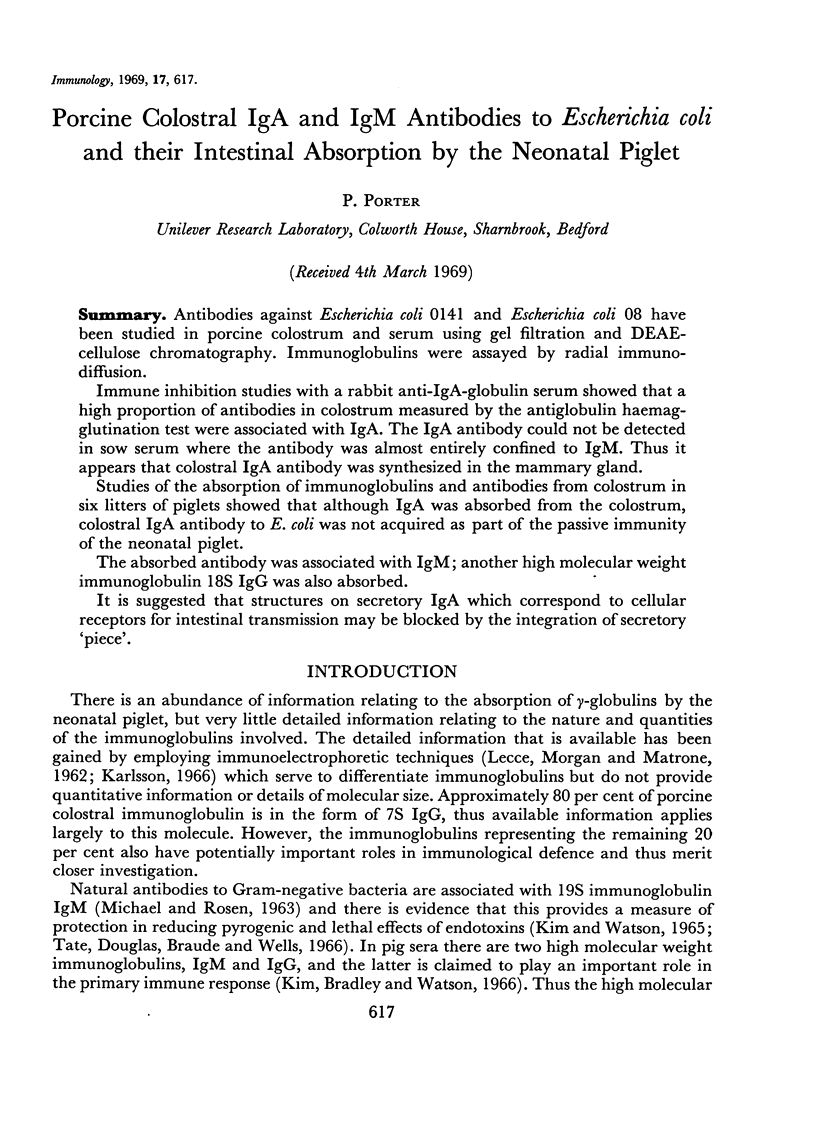

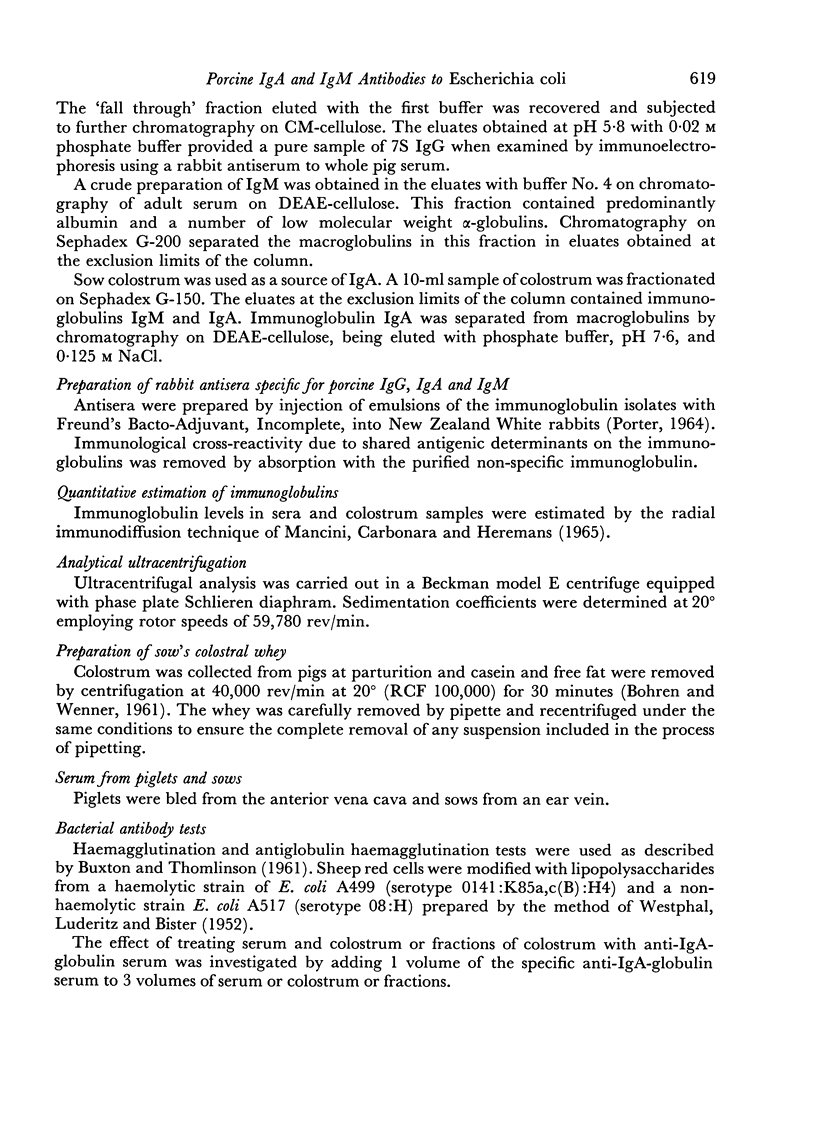

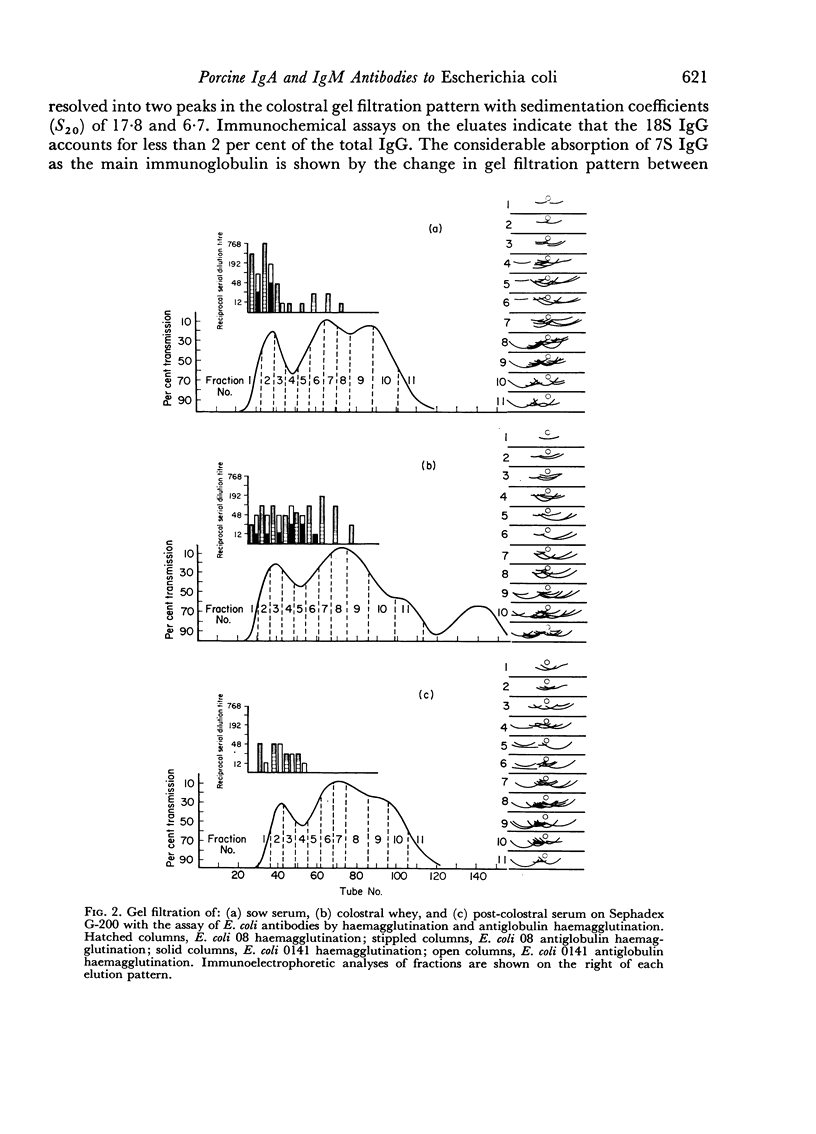


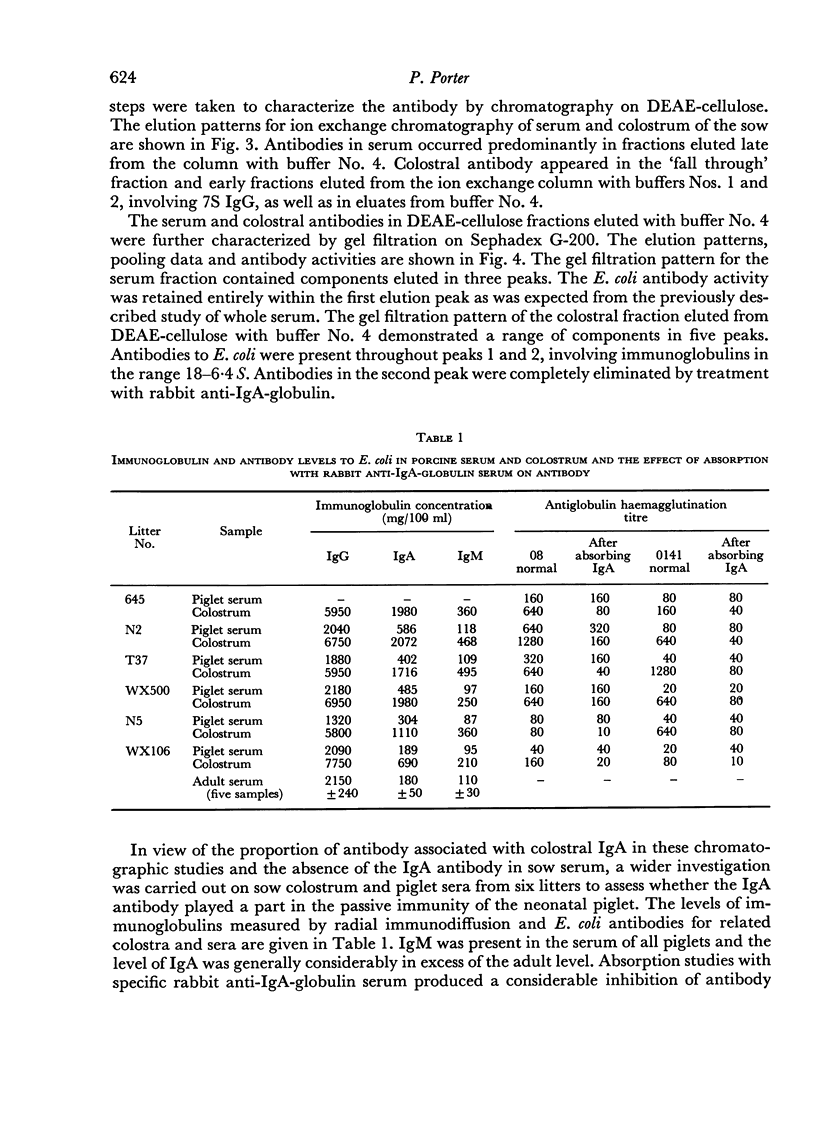

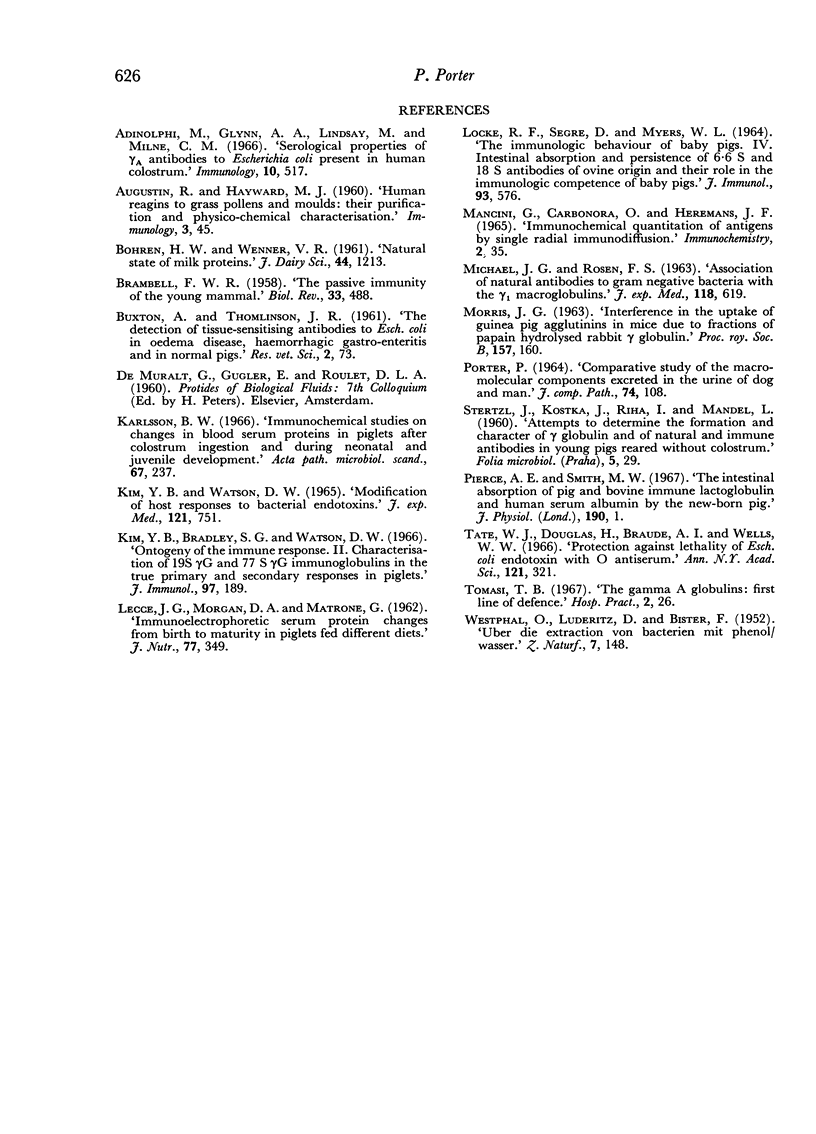
Selected References
These references are in PubMed. This may not be the complete list of references from this article.
- AUGUSTIN R., HAYWARD B. J. Human reagins to grass pollens and moulds: their purification and physico-chemical characterization. Immunology. 1960 Jan;3:45–73. [PMC free article] [PubMed] [Google Scholar]
- Adinolfi M., Glynn A. A., Lindsay M., Milne C. M. Serological properties of gamma-A antibodies to Escherichia coli present in human colostrum. Immunology. 1966 Jun;10(6):517–526. [PMC free article] [PubMed] [Google Scholar]
- KIM Y. B., WATSON D. W. MODIFICATION OF HOST RESPONSES TO BACTERIAL ENDOTOXINS. II. PASSIVE TRANSFER OF IMMUNIY TO BACTERIAL ENDOTOXIN WITH FRACTIONS CONTAINING 19S ANTIBODIES. J Exp Med. 1965 May 1;121:751–759. doi: 10.1084/jem.121.5.751. [DOI] [PMC free article] [PubMed] [Google Scholar]
- Karlsson B. W. Immunochemical studies on changes in blood serum proteins in piglets after colostrum ingestion and during neonatal and juvenile development. Acta Pathol Microbiol Scand. 1966;67(2):237–256. doi: 10.1111/apm.1966.67.2.237. [DOI] [PubMed] [Google Scholar]
- Kim Y. B., Bradley S. G., Watson D. W. Ontogeny of the immune response. II. Characterization of 19S-gamma-G- and 7S-gamma-G-immunoglobulins in the true primary and secondary responses in piglets. J Immunol. 1966 Aug;97(2):189–196. [PubMed] [Google Scholar]
- LECCE J. G., MORGAN D. O., MATRONE G. Immunoelectrophoretic serum protein changes from birth to maturity in piglets fed different diets. J Nutr. 1962 Jul;77:349–354. doi: 10.1093/jn/77.3.349. [DOI] [PubMed] [Google Scholar]
- LOCKE R. F., MYERS W. L., SEGRE D. THE IMMUNOLOGIC BEHAVIOR OF BABY PIGS. IV. INTESTINAL ABSORPTION AND PERSISTANCE OF 6.6S AND 18S ANTIBODIES OF OVINE ORIGIN AND THEIR ROLE IN THE IMMUNOLOGIC COMPETENCE OF BABY PIGS. J Immunol. 1964 Oct;93:576–583. [PubMed] [Google Scholar]
- MICHAEL J. G., ROSEN F. S. ASSOCIATION OF "NATURAL" ANTIBODIES TO GRAM-NEGATIVE BACTERIA WITH THE GAMMA-1-MACROGLOBULINS. J Exp Med. 1963 Oct 1;118:619–626. doi: 10.1084/jem.118.4.619. [DOI] [PMC free article] [PubMed] [Google Scholar]
- PORTER P. COMPARATIVE STUDY OF THE MACROMOLECULAR COMPONENTS EXCRETED IN THE URINE OF DOG AND MAN. J Comp Pathol. 1964 Apr;74:108–118. doi: 10.1016/s0368-1742(64)80015-1. [DOI] [PubMed] [Google Scholar]
- Pierce A. E., Smith M. W. The intestinal absorption of pig and bovine immune lactoglobulin and human serum albumin by the new-born pig. J Physiol. 1967 May;190(1):1–18. doi: 10.1113/jphysiol.1967.sp008189. [DOI] [PMC free article] [PubMed] [Google Scholar]


